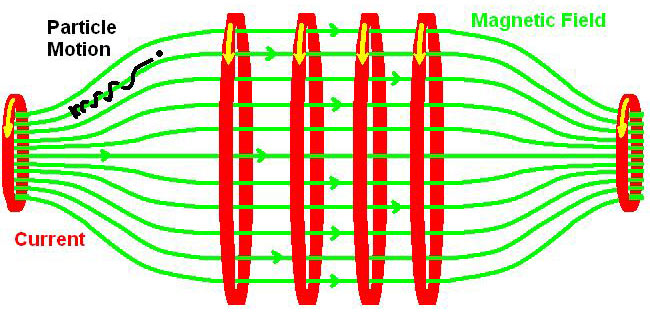magnetic bottle

A magnetic bottle, or magnetic trap, is any configuration of magnetic fields used in the containment of a plasma , espcially for the purpose of achieving controlled thermonuclear reaction experiments. The term applies particularly to a linear configuration in which the ends are stoppered with magnetic mirrors, where a very high magnetic field causes the plasma to be reflected.
The basic principle behind magnetic bottles is that a magnetic field can be used to create a region of space where charged particles are confined by the magnetic field lines. This confinement is similar to the way a magnetic bottle can hold a ferromagnetic fluid in place. The charged particles are trapped in the field lines and can't escape, creating a region of high-density plasma.
One of the key advantages of magnetic bottles is that they can be used to confine plasma at extremely high temperatures and pressures, which is necessary for fusion reactions to occur. In these experiments, the magnetic field lines are carefully controlled in order to create a region of space where the plasma can be heated to millions of degrees Celsius, allowing the hydrogen nuclei to fuse together and release energy.
Magnetic bottles are also used in other areas of research, such as particle physics. In these experiments, magnetic fields are used to trap subatomic particles, such as positrons or anti-protons, allowing scientists to study their properties in detail.
Despite their many advantages, there are also some limitations to the use of magnetic bottles. One of the biggest challenges is maintaining the stability of the plasma for long periods of time. Any disruptions in the magnetic field can cause the plasma to escape, which can lead to damage to the equipment or even a loss of the plasma altogether.
In addition, the magnetic fields used in these devices can be extremely powerful, which can make them difficult and expensive to build and maintain. However, advances in technology have made it possible to create more efficient and effective magnetic bottles, which has led to increased interest and investment in this area of research.


